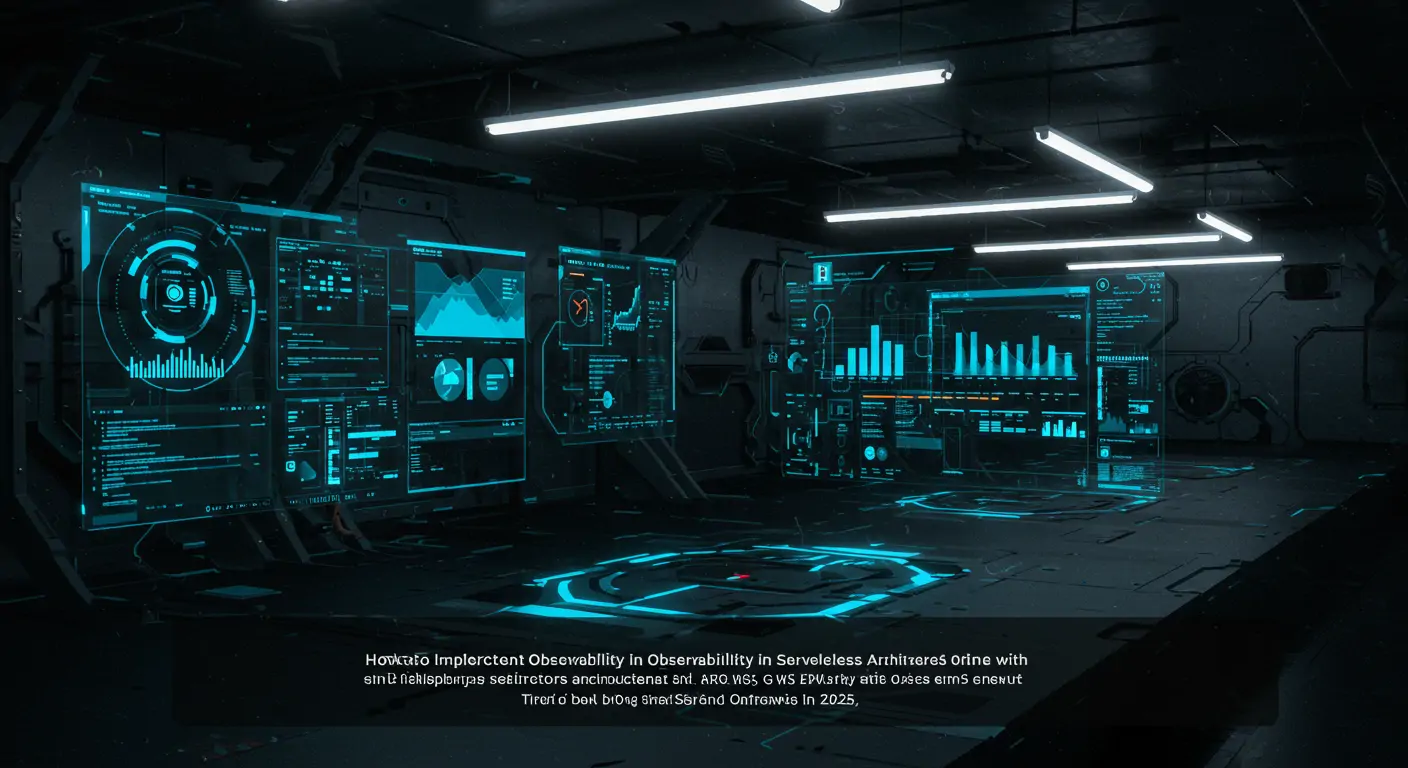The Problem Everyone Faces
In today's tech environment, organizations are increasingly adopting serverless architectures to reap the benefits of scalability and reduced operational overhead. However, observability in these architectures poses a unique challenge. Traditional monitoring tools often fall short because they were designed with more static, server-centric models in mind. As a result, many developers struggle to maintain adequate insight into their distributed applications, leading to extended downtime and difficulty in diagnosing performance issues.
Understanding Why This Happens
Serverless environments present a complex landscape where applications are composed of numerous small, ephemeral components that scale automatically. The root of the observability challenge lies in the transient and distributed nature of these services. Traditional solutions typically rely on agent-based monitoring, which is not feasible in a serverless context due to the lack of a persistent host. Common misconceptions include the belief that serverless is inherently self-monitoring, leading to over-reliance on basic logging.
The Complete Solution
Part 1: Setup/Foundation
To begin, ensure you have AWS IAM roles with the necessary permissions to access CloudWatch and integrate with OpenTelemetry. You also need an AWS account and basic familiarity with AWS services.
Create an IAM role with the above policy to enable OpenTelemetry to send data to CloudWatch.
This diagram illustrates how data flows between AWS Lambda, OpenTelemetry, and CloudWatch.
Part 2: Core Implementation
Next, implement OpenTelemetry in your serverless functions. This involves setting up the OpenTelemetry SDK in your function's codebase, which will automatically capture and relay trace data to CloudWatch.
This setup enables comprehensive tracing of your Lambda functions, capturing critical performance data.
Part 3: Optimization
To optimize observability, one should fine-tune the sampling rate and aggregation settings. Start by setting a reasonable sample rate to avoid excessive data and costs, and configure CloudWatch dashboards to visualize key metrics.
This configuration ensures you capture enough data for analysis without overwhelming your systems.
Testing & Validation
To ensure your observability setup is functioning correctly, conduct integration tests by triggering your Lambda functions and verifying that the traces and metrics appear in CloudWatch. Utilize distributed tracing to follow requests across multiple services.
This will help confirm that the logs and traces are captured as expected.
Troubleshooting Guide
- Missing Logs: Verify IAM permissions and ensure the Lambda environment variables are correctly set.
- High Latency: Check your network configuration and consider reducing sampling rates.
- Data Overload: Review CloudWatch retention settings to manage costs.
- Incomplete Traces: Ensure all dependencies are instrumented with OpenTelemetry.
Real-World Applications
Many organizations, such as Netflix and Spotify, have successfully implemented observability in their serverless architectures using OpenTelemetry and CloudWatch, enabling them to proactively identify performance bottlenecks and optimize their application scaling strategies.
Frequently Asked Questions
Q: How does OpenTelemetry enhance observability in serverless applications?
A: OpenTelemetry provides a robust framework for collecting trace and metric data, allowing developers to gain granular insights into application performance. By standardizing the instrumentation of code, it ensures consistent data collection across different services and languages. For serverless applications, this means that developers can track requests across functions and services, leading to faster diagnosis of issues and better performance tuning. Implementing OpenTelemetry also facilitates vendor-neutral data exports, giving teams flexibility in how they analyze and visualize data.
Q: What are the cost implications of using AWS CloudWatch for serverless observability?
A: While AWS CloudWatch provides a comprehensive suite of tools for observability, developers must be mindful of potential costs associated with data ingestion, storage, and retrieval. Each log, metric, and trace contributes to the overall expenditure. It's important to set appropriate retention policies and use efficient sampling rates to minimize unnecessary data collection. By optimizing your configuration, such as using metric filters and alarms prudently, you can control costs while maintaining visibility. Additionally, AWS offers cost calculators to help estimate and manage expenses effectively.
Q: Can I integrate other observability tools with OpenTelemetry?
A: Yes, OpenTelemetry is designed to be vendor-agnostic, allowing seamless integration with various observability platforms such as Grafana, Prometheus, and Datadog. This flexibility enables organizations to leverage the strengths of different tools to suit their specific monitoring and alerting needs. When integrating, ensure that your data export configurations are correctly set to transmit data to your chosen platforms, and consider using OpenTelemetry's collector to manage data flow efficiently.
Q: How do I handle alerting in a serverless architecture?
A: Effective alerting is critical in serverless environments due to their dynamic nature. Utilize AWS CloudWatch Alarms to trigger notifications based on predefined thresholds for metrics such as error rates, latency, and resource utilization. Combining these alarms with AWS SNS or other notification services ensures timely alerts. Implementing anomaly detection can also enhance alerting by identifying unexpected patterns, reducing noise from false positives, and allowing teams to focus on true incidents.
Q: What best practices should I follow to ensure observability best practices in serverless architectures?
A: Adhering to best practices is crucial for effective observability. Begin by standardizing instrumentation using OpenTelemetry across all services. Regularly review and optimize your logging and metrics configurations to ensure relevance and minimize overhead. Use dashboards to visualize and correlate data effectively, enabling quicker decision-making. Additionally, automate test scenarios to validate observability configurations and ensure they align with application updates. Continuously evaluate new features and updates from AWS and OpenTelemetry to enhance your observability strategy.
Key Takeaways & Next Steps
In this guide, we explored the implementation of observability in serverless architectures using AWS CloudWatch and OpenTelemetry. You learned how to overcome traditional monitoring challenges, set up and optimize observability tools, and troubleshoot common issues. As next steps, consider delving deeper into automated alerting systems, exploring advanced data analytics with AWS Lambda and Kinesis, and integrating additional observability platforms for a more comprehensive monitoring suite.




